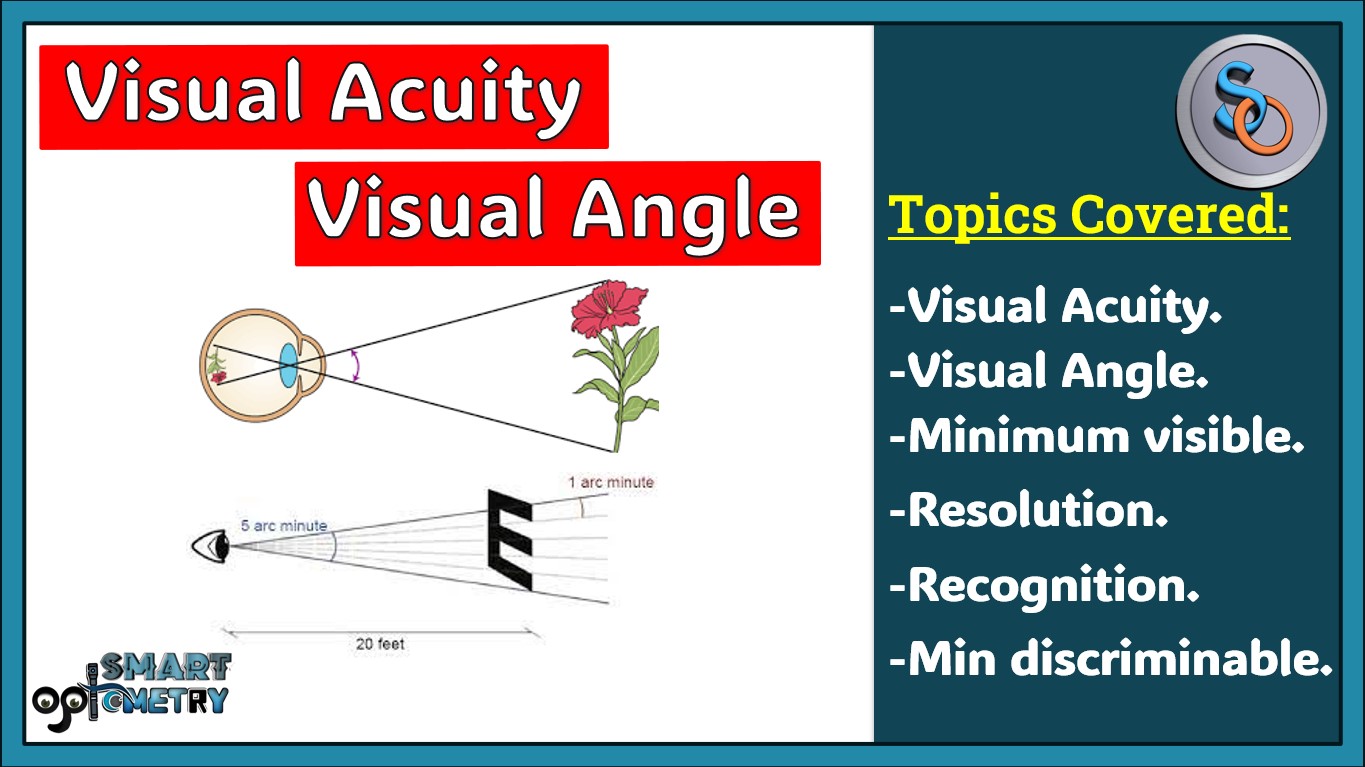What is Visual Acuity?
Visual acuity is a crucial metric in optometry, representing the ability to discern fine details and shapes. It’s essentially a measure of form sense, indicating the spatial limit of visual discrimination. When we talk about measuring visual acuity, we’re determining a threshold—the smallest details that can be accurately perceived. This is often quantified in terms of visual angle, where visual acuity is defined as the reciprocal of the minimum resolvable visual angle, usually measured in minutes of arc for a standard test pattern. In simpler terms, it’s how well someone can see the smallest details clearly.
What is Visual Angle:
Visual angle in optometry refers to the angle formed at the nodal point of the eye by the physical size of an object in our field of vision. This angle determines how clearly and distinctly two adjacent points can be perceived. Research suggests that for clear and discrete vision, these points should create a visual angle of at least 1 minute. The size of the visual angle varies based on both the object’s dimensions and its distance from the eye. For optimal clarity, the object must either be sufficiently large or positioned close to the eye. Understanding visual angle is crucial for assessing visual acuity, as it directly influences our ability to perceive fine details and shapes.
Components of Visual Acuity:
- There are four components of visual acuity:
- Minimum visible.
- Resolution.
- Recognition.
- Minimum discriminable.
1. Minimum Visible:
This component refers to the smallest object or detail that can be seen by the eye. It represents the threshold of visibility, indicating the minimum size an object must have to be detected.
2. Resolution:
Resolution relates to the eye’s ability to distinguish between fine details within an object. It involves the clarity and sharpness of the image formed on the retina, enabling us to discern intricate features and patterns.
3. Recognition:
Recognition refers to the capability of identifying or discerning specific objects or symbols. It goes beyond mere detection, involving cognitive processing to assign meaning to what is seen. For example, recognizing letters or symbols on a chart.
4. Minimum Discriminable:
This component involves the ability to discriminate between two adjacent points or objects. It denotes the smallest separation between objects that can be perceived as distinct entities, contributing to our spatial perception and depth resolution.
Understanding these four components of visual acuity provides insights into the intricate mechanisms underlying our perception of the visual world, crucial for assessing and optimizing visual function in clinical practice.
- Check Our Courses: Ophthalmic Instrumentation, Clinical Refraction, Contact Lens, Binocular Vision, Dispensing Optics, MCQs in Optometry
- Download our App “Optometry Notes & MCQs” from Google Play Store




